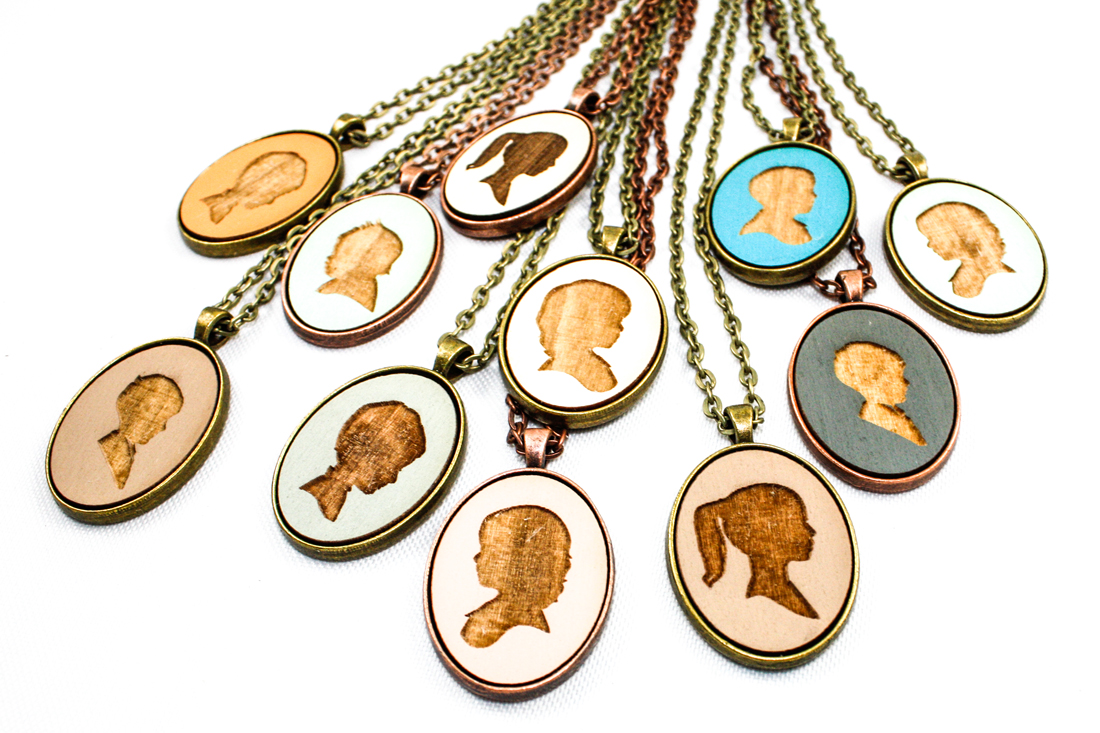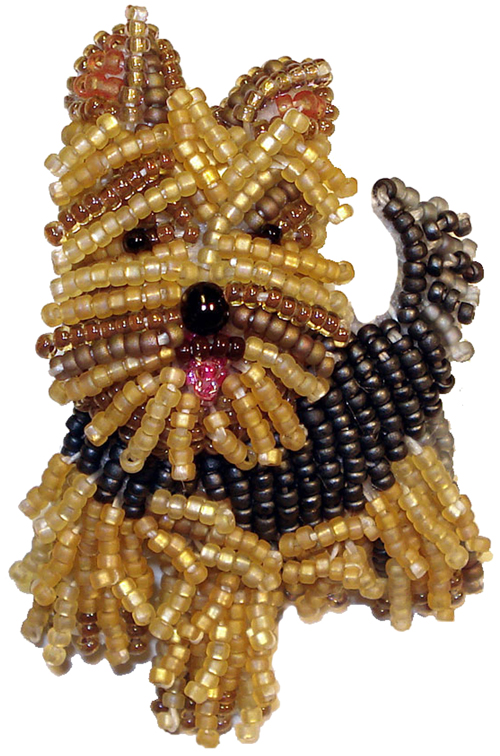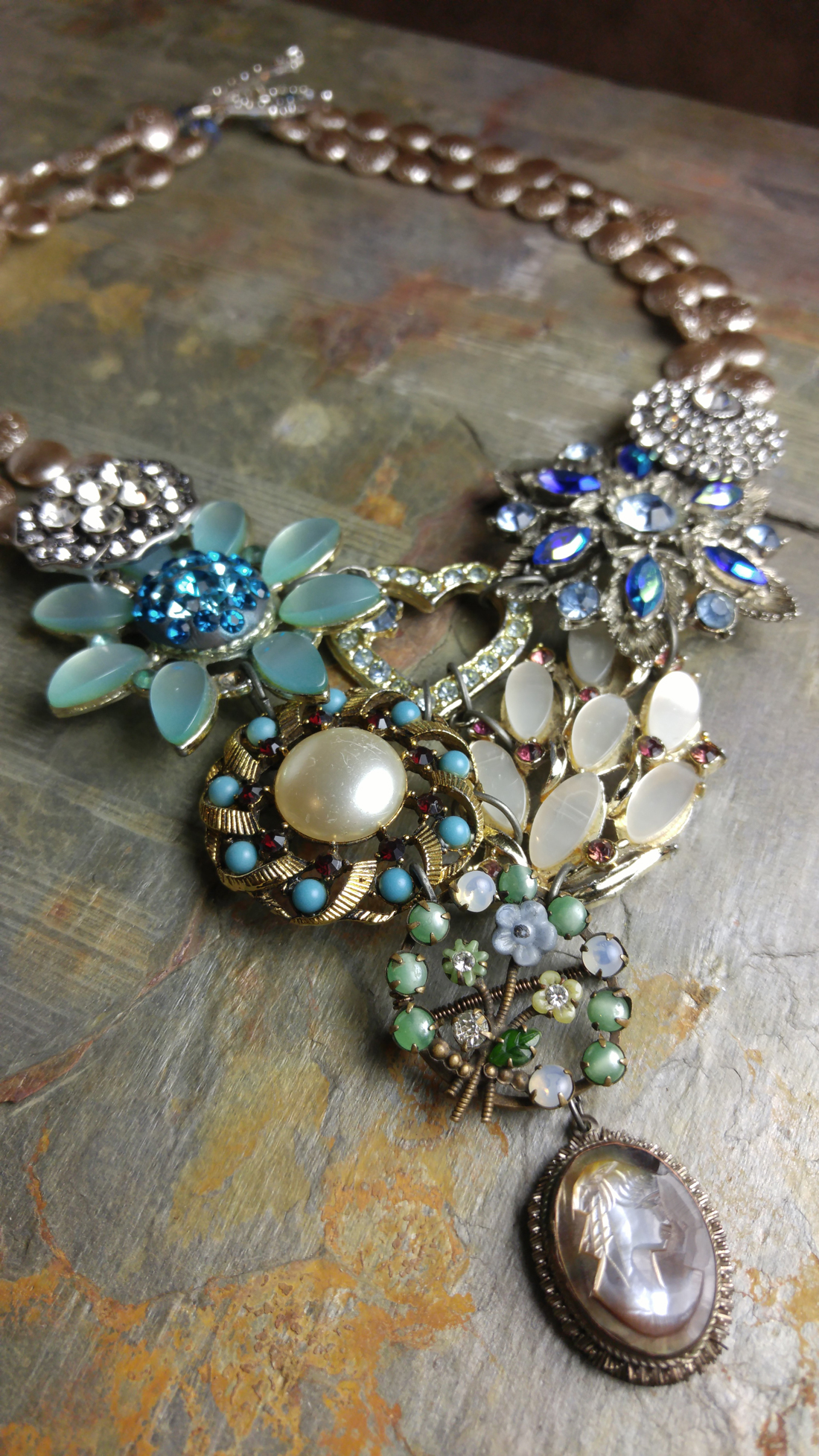
Personalized portrait pendants by Once Again Sam feature laser engraved silhouettes of children or other loved ones.
Photo courtesy of Once Again Sam
Prais-Hintz’ story may not seem that unusual — after all, many jewelry designers create custom weddings pieces for family and friends. But, in this situation, Prais-Hintz had never met the bride.
A quick look at the top 10 jewelry sellers on the Craft Count website reveals that eight offer numerous custom products. The top seller, Layered and Long, has sold more than 127,000 items since opening in October of 2012. It’s no wonder that Etsy Wholesale highlighted “individual expression” as one of its top five trends for spring/summer 2016.

The bead embroidered Yorkshire Terrier pin is The Lone Beader’s most popular design.
Photo courtesy of The Lone Beader
Is Personalization Right for You?
Three successful custom jewelry designers — Prais-Hintz of Tesori Trovati, Sarah Mandell of Once Again Sam and Diana Grygo of The Lone Beader — all agreed that this path is not for everyone. Custom or personalized products require exceptional patience, outstanding communication skills, an open mind and strong organizational skills.
So how do makers succeed in the customer marketplace? Here are a few tips:
Gather Information
Choose a clear, easy way to communicate custom requirements. When Grygo, of The Lone Beader, receives a custom order, she lists all available options, prices and production time in a single email. Products with limited options (such as choosing a color) might only need an online system such as Etsy or Handmade at Amazon, where the customer can select preferred options upon checkout.
Custom Made offers a more open-ended solution, prompting customers to fill out an online form with measurements, budget and other details. Prais-Hintz says she sometimes meets with local customers in person to ask them about the length and color of the jewelry, as well as their favorite hobbies, meaningful words and special objects. She picks up clues from the customer’s fashion style and personality — deciding, for example, to go with a symmetrical design for an orderly personality instead of an asymmetrical one with funky shapes.
Show Limited Options
Mandell, of Once Again Sam, recommends limiting custom choices to keep things from getting out of control and to ensure that your profit margins aren’t at risk. For her Curious Cameo line, Mandell offers options for design, color and setting. Photos of finished samples help customers who are not designers themselves articulate their vision of the finished product.
Communicate
Refine your communication process as needed.
“Early on, I felt like I spent more time corresponding with a customer about their order than I did making their actual order,” Mandell admits.
Grygo advises sending a sketch of the design along with measurements to the customer for approval.
“I also send a photo of the finished beadwork prior to shipment,” Grygo says. “This helps ensure that my customer will be happy with the item they have purchased.”
On the other hand, as Mandell notes, sending proofs can be like opening a can of worms, so choose the route that makes the most sense for your business.
Know When To Say No
You don’t need to accept every request. Perhaps the customer has an unreasonably short deadline or an unrealistic budget.
“I have never had a client who micromanaged the process and needed to see things every step of the way,” Prais-Hintz says. “If I did, I’d know that this would not be the client for me.”
Address Costs
Prais-Hintz lets the customer set the budget and then chooses suitable materials and techniques, as well as an amount for her time and expertise.
“I make sure they know that I will work within their budget, but the higher the budget, the better the materials and the more intricate the details,” she says.
Grygo notes that her custom pieces are “priced at least 25 percent higher than ready-to-ship or made-to-order items to help cover design and communication time.”
Set Clear Deadlines
Emphasize your processing and shipping times, especially during busy holidays such as Mother’s Day or Christmas. If necessary, set cut-off dates for orders to avoid customer disappointment and poor reviews.
Write a Return Policy
A “no return” policy is common for custom orders. Payment processors typically recognize that custom work cannot typically be resold if returned. PayPal, for example, states that “custom-made items” are not protected under their Buyer Protection program, which normally reimburses customers for online purchases made with their payment system.
Expand Your Offerings
Custom orders can often point to new directions for your shop.

Tesori Trovati transformed brooches from a client’s grandmother into a unique necklace.
Photo courtesy of Tesori Trovati
The Sweet Spot
For some sellers, personalization helps them reach that coveted handmade sweet spot — a place where creating a strong business and making a personal connection blend together seamlessly.
Mandell, for example, notes that custom orders only make up about 25 to 30 percent of her business, but says she vividly recalls the pieces she’s made for customers who have lost loved ones.
“Numerous orders have brought tears to my eyes,” Mandell admits. “I never realized that jewelry can be so powerful, but sometimes it’s the tangible thing that brings a bit of comfort.”

Michelle Mach
contributor

Trackbacks/Pingbacks